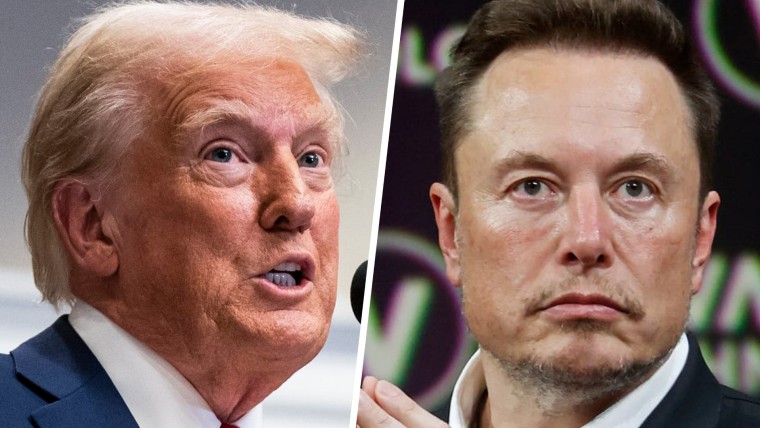Days into the new Trump administration, the Office of Personnel Management sent millions of federal employees an email demanding that they either accept a set of sweeping changes to the workplace or resign. A senior administration official told NBC News that they expected 5%-10% of the federal workforce to quit.
President Donald Trump’s OPM failed to hit its target. Instead, about 75,000 workers, or around 3.75% of the federal workforce, accepted the OPM’s offer to resign. Keep in mind that, according to the Partnership for Public Service, the attrition rate of the federal workforce was 5.9% in 2023. It’s unclear what percentage of the resignations fall under routine transitions into retirement or departures from public service.
Trump's attempts to shrink the federal government resemble a strategy of throwing everything at the wall and seeing what sticks.
On Thursday, the Trump administration pivoted to a new tack: mass firings of probationary workers. Given that there are an estimated 200,000 federal workers on probationary status, that approach could potentially put a bigger dent in the size of the workforce.
It’s increasingly evident that Trump’s attempts to shrink the federal government resemble a strategy of throwing everything at the wall and seeing what sticks. It’s too early to say how far Trump will get. But it’s clear that the process is not designed to achieve greater “efficiency,” which is about enhancing productivity. Rather, what we’re seeing is Trump and his DOGE lieutenant Elon Musk take a machete to the workforce to achieve a crude end goal of shrinking it — but without any regard for how it functions.
The failure of OPM’s initial resignation offer to hit its target range suggests a few possible realities about how federal workers may have viewed Trump’s agenda. The email sent out to workers offered them an opportunity for “deferred resignation,” meaning they could, apparently, quit and receive pay through September. They were told that if they stayed on they should expect downsizing, a new “performance culture” and “enhanced standards of conduct.”
But that offer may have come across to some as dubious. Unions for federal workers described the offer as an attempt to coerce their members into leaving their jobs involuntarily based on vague threats. Those unions questioned the legality of OPM’s guidance and expressed skepticism that the Trump administration would (or could) honor its terms. Some legal experts on federal employment law were also skeptical whether Trump could fulfill his promise to pay workers who leave through the end of September, or whether it's legal.

In fact, there were warning signs that the deferred resignation deal was somewhere between sloppy and a con. As NBC News reported, “Workers in at least one agency, the Education Department, were told [by the department’s new chief of staff] that if they accept the resignation package, the education secretary may later cancel it and employees would not have any recourse, potentially leaving them without promised pay.”
This is all to say that there may have been federal workers who were interested in the offer but were afraid to take it. Conversely, there was likely a subpopulation of workers who were going to retire in 2025 anyway and figured they had nothing to lose in taking it. And there may also be a group of workers who saw it as their responsibility to stay on regardless of what was offered and serve as a bulwark against Trump’s appetite for loyalism and policy chaos in the government.
The pivot to firing probationary workers represents the next phase of Trump’s purge agenda. Probationary status refers to when a worker is relatively new to the workforce — typically one or two years into the job — before civil service protections take effect. It’s unclear how many people are going to be let go. According to NBC News, dismissals are happening at the Department of Veterans Affairs, the Education Department, the Department of Housing and Urban Development and the U.S. Forest Service, among other places.
There are already clear signs that the rationale that the administration is using for getting rid of recent hires is bad faith. Government Executive obtained several termination notices from probationary workers that stated “the cause was poor performance ‘and/or’ a lack of fitness.” But Government Executive said that one employee fired from the Small Business Administration who “received a termination notice for poor performance said the letter arrived despite not yet working a single day for the agency.” Other fired employees said that they had “received outstanding grades in their performance reviews.”
Everett Kelley, the president of the American Federation of Government Employees, a union for federal workers, said in a statement that the Trump administration “has abused the probationary period to conduct a politically driven mass firing spree, targeting employees not because of performance, but because they were hired before Trump took office.”
“These firings are not about poor performance — there is no evidence these employees were anything but dedicated public servants. They are about power,” Kelley continued.
OPM is framing its firings as an attempt to “streamline the federal government to better serve the American people at the highest possible standard.” But there is nothing about the process so far that suggests there is any real standard that Trump and Musk are going for other than a smaller, less able and, they hope, more pliant workforce.

